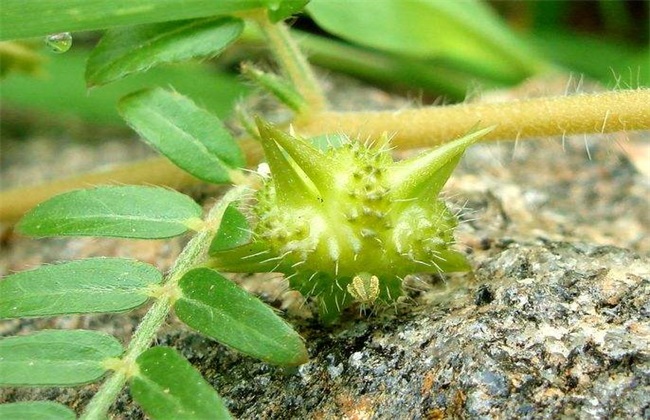Planting techniques of Tribulus terrestris
Tribulus terrestris, also known as Tribulus terrestris, is a plant belonging to the family Tribulus terrestris, which is distributed all over China. The economic value of Tribulus terrestris is relatively high, and fresh Tribulus terrestris can be used as feed for livestock such as cattle and sheep. The fruit can also be used in medicine, has a variety of effects, such as calming the liver and eyesight, dispelling wind and blood, and has a certain economic value. So how to plant Tribulus terrestris? Today, the editor brings you the planting technology of Tribulus terrestris. Let's take a look at it.
1. Soil selection
Tribulus terrestris was originally a kind of weed, so it has a very strong growth ability. Wild Tribulus terrestris is not strict with the soil and can grow normally in most soils. But artificial planting is mainly for yield, so in artificial planting. The selection of soil is still very important, mainly sandy soil with loose soil, sufficient fertility and strong permeability. After selecting the soil, it is necessary to do a good job in soil preparation, remove sundries from the soil and disinfect it. Then apply sufficient fertilizer to improve the soil fertility and ensure adequate nutrition for the growth of Tribulus terrestris.

2. Methods of reproduction
The propagation method of Tribulus terrestris is generally based on seed propagation, and the seed maturity time of Tribulus terrestris is about August every year. Choose full green and white fruit and dry it in the sun. Before sowing, separate the fruit from the seed and pick out the pure seed. The sowing time is every spring. The soil should be watered thoroughly before sowing, and then sown and covered with soil. If it is on demand, then the row spacing should be controlled at about 50 cm, the plant spacing should be kept at about 35 cm, and the seed hole should be dug. Sow about 4 seeds in each hole, then cover the soil and water it, and the sowing amount per mu is controlled at about two thousand grams. In order to improve the germination rate of seeds, the germination treatment can be done properly before sowing.
3. Seedling management
When the seedlings grow to about 5 cm, it is necessary to carry out inter-seedling work to remove weak seedlings and overgrown seedlings in time. Then when the seedlings grow to about 10 centimeters high, if it is sowing, the distance between seedlings should be controlled at about 35 centimeters, and if sowing on demand, about 3 seedlings will be retained in each hole. If there is a shortage of seedlings, it is necessary to replenish the seedlings in time. Then we have to do a good job of weeding in the seedling stage, and weeds will rob the growth and nutrition of Tribulus terrestris. So to timely emergence, seedling emergence should not be too deep and overweight, to avoid injury to the roots of Tribulus terrestris seedlings, shallow hoe about two centimeters.
4. Field management
In addition to applying sufficient base fertilizer before planting, we also need to topdressing properly according to the soil fertility in the process of planting Tribulus terrestris, about twice during the whole growth period. Before and after the Mid-Autumn Festival, we should do a good job of keeping seeds, and in order to ensure that there is no big difference in the ripening time of seeds, we should pinch off the growing points of each branch in time. Ensure that the branches and vines can improve the amount of short branches and fruit rate. Finally, it is necessary to do a good job in the prevention and control of diseases and insect pests, such as white rust, red spiders, etc., to avoid diseases and insect pests harming the growth of Tribulus terrestris, resulting in a decline in yield and affecting planting efficiency.
The above is a brief introduction to the planting technology of Tribulus terrestris. The planting technology of Tribulus terrestris is actually very simple, but if you want to increase the yield, then the management is very important, so we must pay more attention. That's all for today's introduction. This article is for reference only. I hope it can help you all.
Related
- Fuxing push coffee new agricultural production and marketing class: lack of small-scale processing plants
- Jujube rice field leisure farm deep ploughing Yilan for five years to create a space for organic food and play
- Nongyu Farm-A trial of organic papaya for brave women with advanced technology
- Four points for attention in the prevention and control of diseases and insect pests of edible fungi
- How to add nutrient solution to Edible Fungi
- Is there any good way to control edible fungus mites?
- Open Inoculation Technology of Edible Fungi
- Is there any clever way to use fertilizer for edible fungus in winter?
- What agents are used to kill the pathogens of edible fungi in the mushroom shed?
- Rapid drying of Edible Fungi



